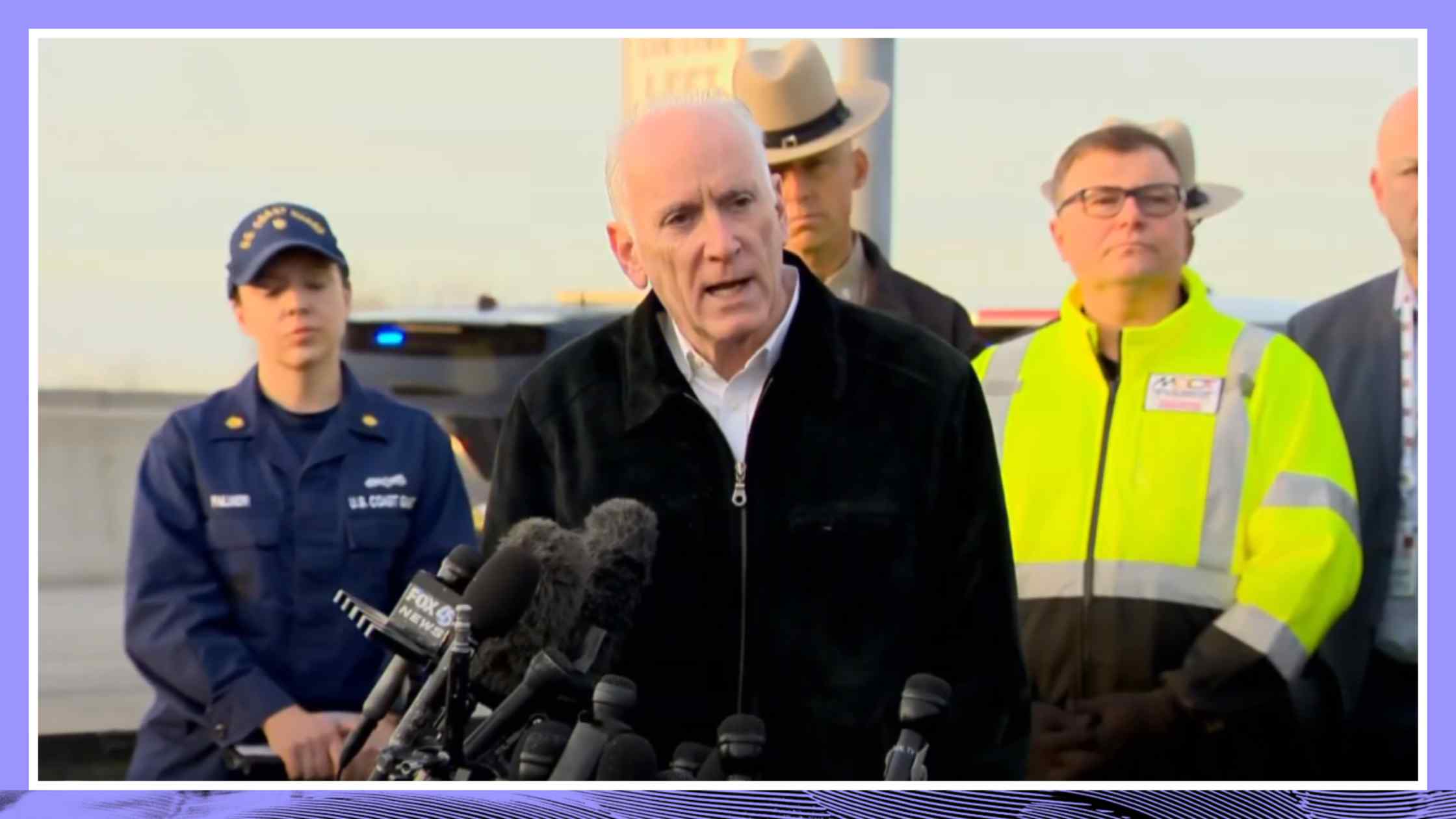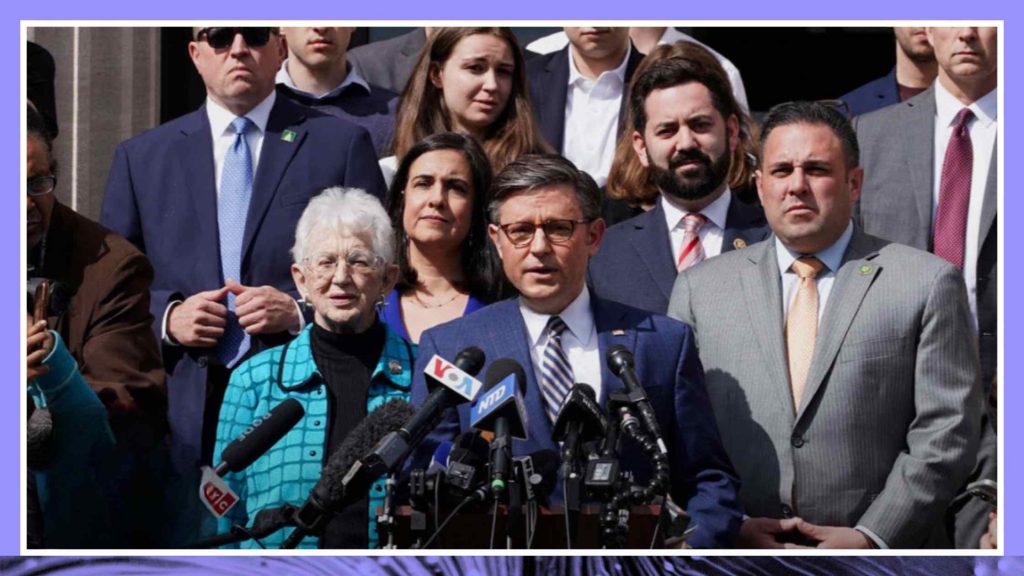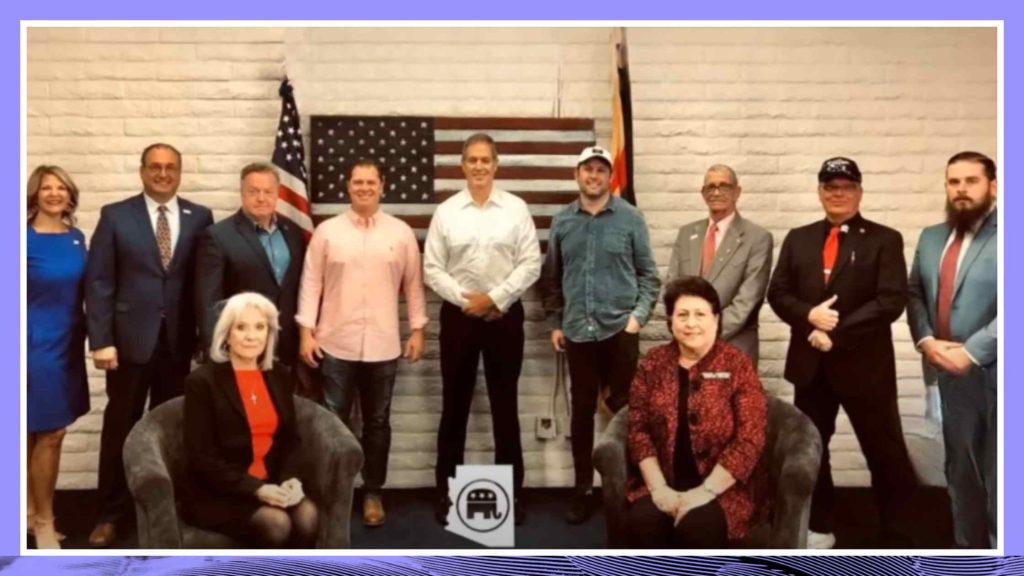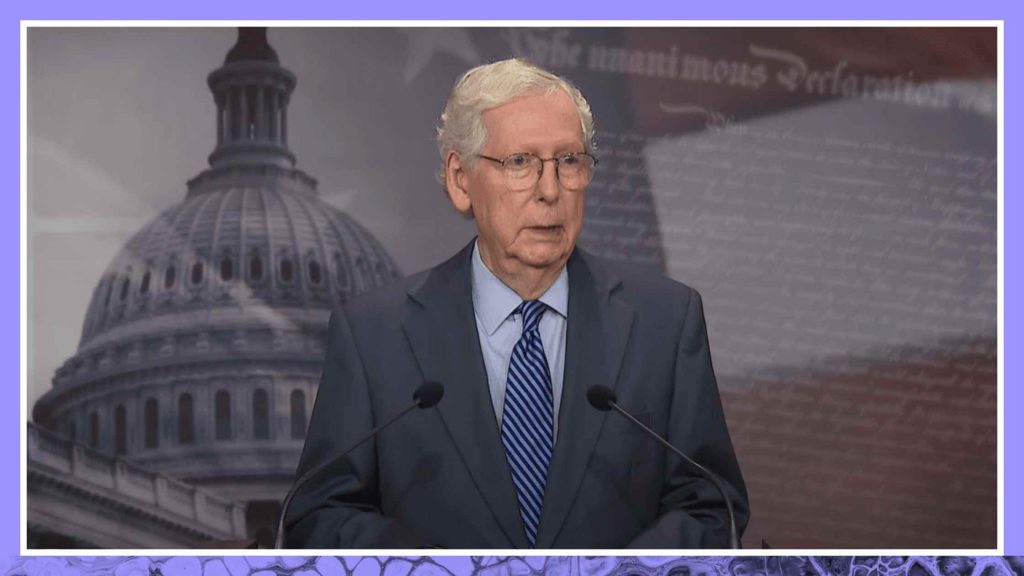Mar 26, 2024
Officials Give Briefing on Baltimore Bridge Collapse

Officials give update on Baltimore bridge collapse. Read the transcript here.
In our first unified joint command news briefing at the Key Bridge I-695 in Baltimore, Maryland, I am going to introduce to you our Maryland Secretary of Transportation, Paul Wiedefeld. It’s spelled P-A-U-L, Wiedefeld, W-I-E-D-E-F-E-L-D. Thank you.
Paul Wiedefeld (00:20):
Thank you. Good morning. At approximately 1:30 AM, a cargo ship, leaving the port of Baltimore, struck the Francis Scott Key Bridge. This caused the catastrophic collapse of the bridge. First responders from the Maryland Transportation Authority, the Toll Authority and our federal, state, local partners immediately responded to the scene. At this time, this is an active search and rescue mission. We know there were individuals on the bridge, at the time of the collapse, working on the bridge; contractors for us. Our partners from the US Coast Guard will provide some more information momentarily. In terms of traffic, drivers should avoid I-695 Southeast Corridor and use I-95 and I-895 as alternatives. I-695 is being detoured southbound at Exit 43, the Peninsula Expressway, and northbound at Exit 2, Route 10.
(01:14)
Vessel traffic into and out of the port of Baltimore is suspended until further notice, but the port is still open for truck transactions. Obviously, we’re very thankful for the first responders who are carrying out their efforts in these rescues and that they’re doing this all through the night and today. And we’re praying, obviously, for everyone’s safe return. We’ll continue to provide updates to you. The next one being approximately 9:30. With that, I will turn over to Lieutenant Colonel Palmer from the US Coast Guard.
Lieutenant Commander Erin Palmer (01:49):
Good morning. My name is Lieutenant Commander Erin Palmer from Coast Guard Sector Maryland-National Capital Region. I’m the current acting chief of response for the sector. The Coast Guard’s primary mission right now is search and rescue, looking for any survivors in the water. On scene, we currently have three small boats. We also have Coast Guard Cutter Mako, an 87-foot patrol boat. We have a helicopter from Air Station Atlantic City and we’re working with numerous federal, state, and local partners on scene on these search and rescue efforts. Thank you.
Paul Wiedefeld (02:20):
We’re going to take any questions you have at this time.
Speaker 4 (02:24):
What role is the FBI playing in the investigation at this time?
Paul Wiedefeld (02:28):
The FBI has, basically, to see if there was any terrorism connection, which there is not.
Speaker 5 (02:34):
Any confirmed number of deaths?
Speaker 6 (02:34):
How many dead people are you looking for?
Paul Wiedefeld (02:36):
No confirmed fatalities.
Speaker 4 (02:38):
Any recovered from the water alive?
Paul Wiedefeld (02:40):
They’re still on it, the rescue mission is still active.
Speaker 6 (02:44):
Do you have any sense of what happened to the actual cargo ship? There was some reports that it suffered some major power outages just before it crashed into the bridge.
Paul Wiedefeld (02:52):
Too early in the investigation.
Speaker 5 (02:52):
[inaudible 00:02:53]?
Speaker 7 (02:53):
Was a pilot operating the ship coming in and out of the port? Was it a port’s authorized pilot or was it the captain of the ship?
Paul Wiedefeld (03:00):
The pilots move ships in and out of the port of Baltimore.
Speaker 7 (03:03):
Say that again.
Paul Wiedefeld (03:04):
Pilots move ships in and out of Baltimore.
Speaker 8 (03:08):
What’s happening to all the other ships that are waiting, the backup at this point? How are you navigating that?
Paul Wiedefeld (03:12):
Basically we’re communicating with them. They obviously understand the situation and we’ll deal with the logistics of that later.
Speaker 9 (03:18):
Has the crew been evacuated from the ship and has the Coast Guard been able to make contact with the pilot on the ship?
Paul Wiedefeld (03:25):
That’s all being done right now. I don’t know the exact details of where they all are, but yes, obviously we’re contacting them.
Speaker 8 (03:32):
With the FBI involved is this being investigated as suspicious?
Paul Wiedefeld (03:35):
In any type of incident like this the FBI would be engaged just to make sure and that’s what they did.
Speaker 10 (03:41):
Do you have any idea how many vehicles are in the water?
Speaker 8 (03:43):
Can you just, any idea how could this happen? This bridge should not have collapsed like this.
Paul Wiedefeld (03:47):
Too early in the investigation.
Speaker 11 (03:50):
Paul, could you just [inaudible 00:03:51]-
Speaker 12 (03:50):
How long will the port be closed?
Speaker 11 (03:51):
Do you know how deep the water is there and sort of this area where it happened, the conditions?
Paul Wiedefeld (03:57):
Approximately 50 feet.
Speaker 13 (03:59):
Yeah, that’s correct.
Paul Wiedefeld (04:00):
50 feet.
Speaker 14 (04:01):
How many people are you looking for right now?
Speaker 8 (04:02):
[inaudible 00:04:03] on how many people were rescued? How many were pulled from the water? How many are you still searching for?
Paul Wiedefeld (04:09):
That is what we’re doing. We’re basically searching for everyone that was potentially on the bridge. As you can imagine, it’s the middle of the night. What type of traffic was there? How many workers were there? Workers, they obviously come to a project, but other workers show up sometimes, so that’s what we’re investigating right now.
Speaker 4 (04:28):
Is this unprecedented? Has anything like this ever happened?
Paul Wiedefeld (04:32):
Not in Baltimore.
Speaker 8 (04:33):
Sir. Can you talk more about the workers on the bridge, what was going on and how many vehicles you think might actually be in the water?
Paul Wiedefeld (04:40):
They were basically doing some concrete deck repair. We don’t have the number of the vehicles.
Speaker 8 (04:44):
Do we know who they work for?
Paul Wiedefeld (04:46):
I don’t have that right off-hand.
Speaker 4 (04:47):
How long will the port be closed? Any estimate?
Paul Wiedefeld (04:50):
Too early to determine.
Speaker 15 (04:52):
Are you still looking for seven people?
Paul Wiedefeld (04:53):
A number of people. That’s the one number that we’ve had, but obviously we’re researching to see if anyone else was on that bridge.
Speaker 8 (05:01):
Can you speak to some of the challenges? The freezing water, the current, the darkness this morning as you were searching for individuals?
Paul Wiedefeld (05:08):
All of the above, to be frank. It’s a very, very tough situation. [inaudible 00:05:13] at 1:00 AM in the morning, very little information at that time. It happened instantaneously as you’ve seen.
Speaker 8 (05:20):
Sir, it’s been a number of hours. At this point, what can you tell family members who might be watching about any hope that you will still recover survivors?
Paul Wiedefeld (05:27):
We actually have set up a facility for any family members. We have mental health professionals there as well, so we’re dealing with that.
Speaker 4 (05:35):
And are you ruling out any kind of intentional motive [inaudible 00:05:40]?
Paul Wiedefeld (05:40):
We don’t see anything that relates to that at this time. It’s an open investigation, but there’s nothing that points to that in any direction.
Speaker 16 (05:49):
[inaudible 00:05:49] first calls after the incident come in directly from the ship, when the ship hit there. Who were the first ones to make the 911 calls to kind of alert you?
Paul Wiedefeld (05:59):
I don’t know. I don’t have that information.
Speaker 8 (05:59):
Do you have any indication whether the ship lost power?
Paul Wiedefeld (06:04):
It’s too early.
Speaker 8 (06:05):
And just for clarification-
Paul Wiedefeld (06:06):
I’m sorry…
Speaker 1 (06:06):
Last question please.
Speaker 8 (06:08):
The port is closed except for trucks moving transport out.
Paul Wiedefeld (06:12):
Right, right.
Speaker 8 (06:12):
Okay.
Paul Wiedefeld (06:13):
Okay. And we’ll be back shortly about 9:30. I’m sorry.
Speaker 17 (06:16):
This bridge was built in the 1970s, took about five years to construct it. Right. Any idea what we can expect forward [inaudible 00:06:23]?
Paul Wiedefeld (06:24):
Too early. Obviously we reached out to a number of engineering companies and so obviously we have a long road in front of us to get to that point. Okay, thank you so much.
Speaker 1 (06:33):
Thank you.
Speaker 17 (06:34):
Can you tell…
Transcribe Your Own Content
Try Rev and save time transcribing, captioning, and subtitling.



